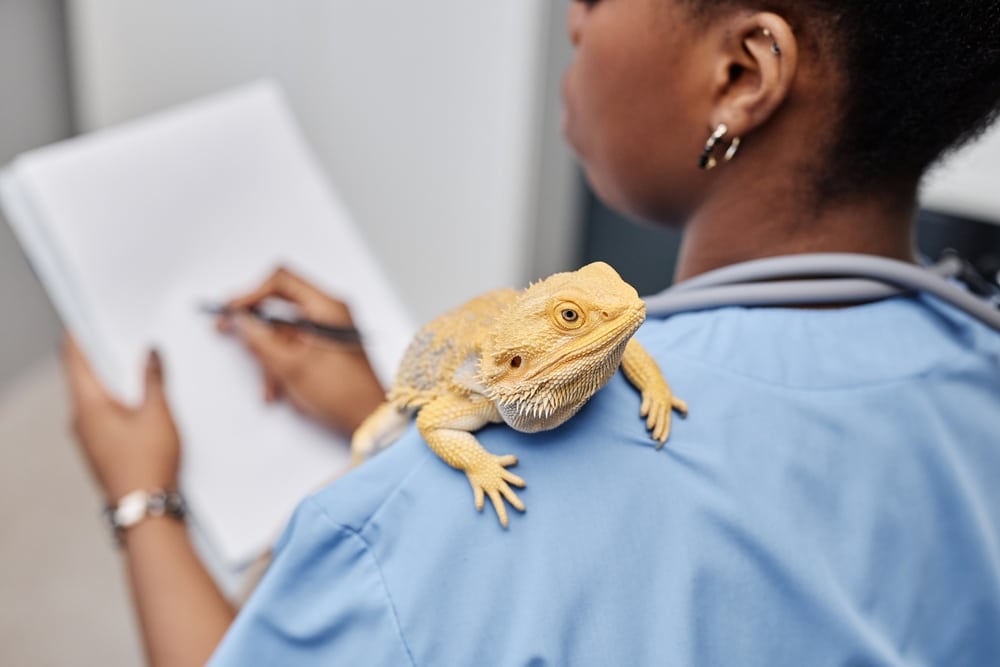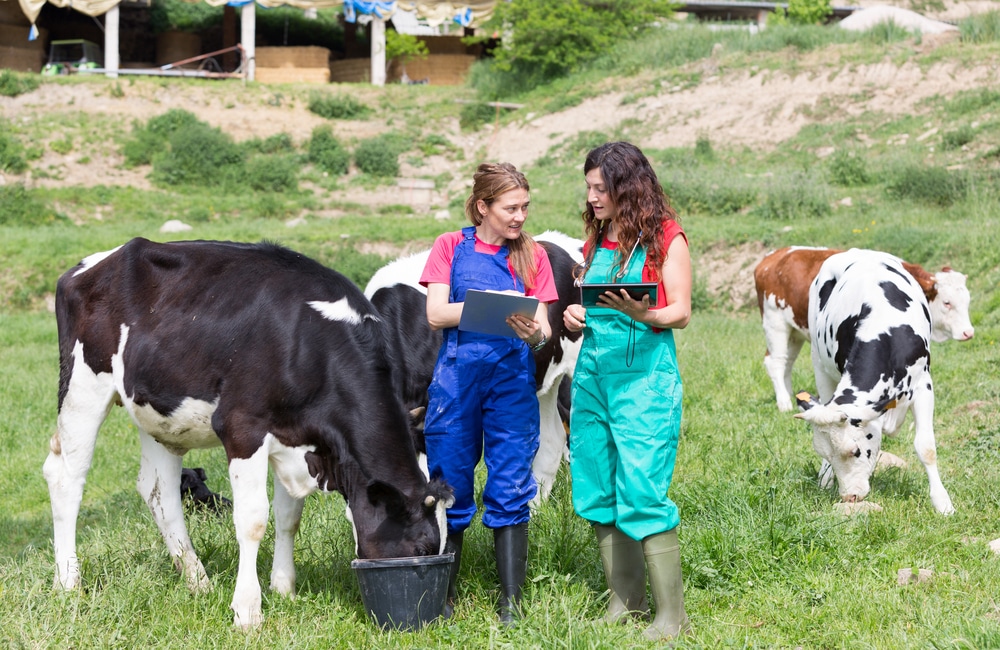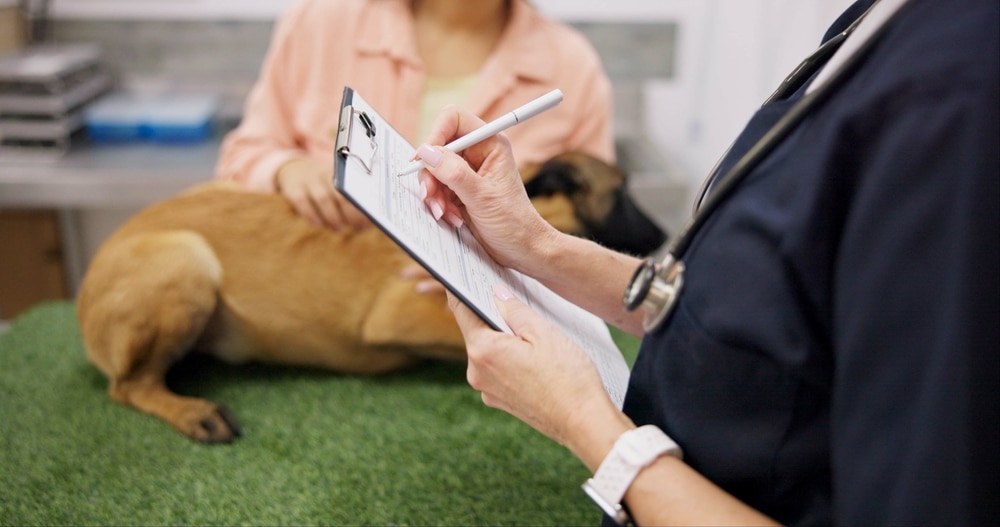SOAP notes are essential in veterinary medicine, providing a structured and standardized framework for documenting patient information. High-quality SOAP notes can make a world of difference in keeping records organized and staff in the loop regarding treatments and ongoing care.
Why the significance? Vet SOAP notes track patient progress, ensure accurate diagnoses, and facilitate effective communication between veterinary professionals and pet owners. SOAP notes are where all the important patient information lives. Whether routine checkups or emergency cases, SOAP notes play a key role in providing ongoing care for animals, keeping their health records organized, and ultimately improving treatment outcomes.
What are SOAP Notes in Veterinary Medicine?
SOAP notes are a standardized method for documenting patient interactions and treatment plans in veterinary medicine.
The acronym SOAP stands for:
- Subjective: representing the pet owner’s observations and concerns
- Objective: data collected during the patient exam, such as vital signs
- Assessment: analysis of subjective and objective notes, to formulate a diagnosis
- Plan: includes the proposed treatment plan
The SOAP note structure ensures that vital information about a patient’s condition is accurately recorded and easily accessible to other providers.
High-quality SOAP notes are essential for a variety of reasons, such as:
- Enabling veterinary professionals to track a patient’s progress
- Ensuring that no details are overlooked
- Confirming that clients’ concerns are heard and understood
- Outlining a clear plan of action for the patient
- Facilitating communication between all members of the care team
SOAP notes provide a chronological account of a patient’s condition, from the appearance of initial symptoms to diagnosis and treatment. This alone makes SOAP notes invaluable for ongoing care and decision-making.

Veterinary SOAP Note Structure
As introduced above, the SOAP note structure consists of four sections for veterinarians: Subjective, Objective, Assessment, and Plan. Each section is crucial for creating a comprehensive, easy-to-follow record that guides diagnosis and treatment. Below is an overview of what each section should contain and best practices for writing effective SOAP notes.
S – Subjective
The Subjective section is where you document the patient’s history and the pet owner’s observations. This part includes the pet owner’s account of the problem, such as any complaints or changes in behavior they’ve noticed. It often includes a “Chief Complaint,” which is the main reason the pet was brought in for treatment.
O – Objective
The Objective section is where you document measurable data, such as the results of physical exams, lab tests, or imaging. This includes vital signs (temperature, pulse, respiration), weight, and other observable signs that can be used to assess the patient’s health.
A – Assessment
The Assessment section combines the information from the Subjective and Objective sections to arrive at a diagnosis or a list of possible diagnoses. This section allows the veterinarian to evaluate the pet’s current condition and decide on the most likely cause of the symptoms. It may also include a differential diagnosis, where the vet considers multiple potential causes for the patient’s issues.
P – Plan
The Plan section outlines the next steps for the treatment and management of the patient. This includes any referrals to specialists, prescribed medications, or other therapies that may be necessary. Additionally, the Plan section may include recommendations for patient education, follow-up appointments, and other steps to ensure that the pet receives the appropriate care.
A Standard Veterinary SOAP Template
There are typically three veterinary SOAP templates for clinical use. From least detailed to most detailed, they are Basic SOAP, Simple SOAP, and Standard SOAP. You may also have the option of creating a custom template.
Below is a sample of a Standard SOAP template.
S – Subjective:
- Chief Complaint: [Detailed description of the owner’s concern]
- History: [In-depth medical history of the pet, including past conditions and treatments]
- Behavioral Changes: [Details on how the pet’s behavior has changed]
- Diet & Appetite: [Detailed information on eating, drinking, or weight loss]
- Exercise & Activity Level: [Notes on how the pet is moving or engaging in normal activities]
- Environmental Factors: [Changes in the pet’s environment, such as new pets, stressors, etc.]
- Medication History: [Previous and current medications, dosages, and duration]
O – Objective:
- Vital Signs: [Temperature] [Heart Rate] [Respiratory Rate] [Weight]
- Physical Exam Findings: [Detailed findings from head to toe, e.g., lymph nodes, abdominal palpation, dental exam]
- Laboratory Results: [Blood Work] [Urinalysis] [Fecal Exam]
- Imaging: [Detailed findings from X-rays, ultrasounds, or other diagnostic imaging]
- Special Tests: [Results from culture, biopsy, or any other special tests]
A – Assessment:
- Primary Diagnosis: [Most likely diagnosis]
- Differential Diagnosis: [Additional potential diagnoses to consider]
- Ruling Out: [Explanations of conditions that were ruled out]
- Clinical Reasoning: [Thought process behind the diagnosis]
- Prognosis: [Short-term and long-term outlook for the patient]
P – Plan:
- Immediate Treatment: [Medications, therapies, surgeries] [Specific dosages, routes, and frequency]
- Follow-Up: [Dates for rechecks, follow-up diagnostics] [Further tests to be done]
- Referral: [Details of any specialist referrals or consultations]
- Owner Instructions: [Detailed instructions for the pet owner on medication administration, care at home, diet, etc.]
- Prevention & Maintenance: [Long-term care plan, preventive measures, lifestyle modifications]
- Outcome Tracking: [Ways to track progress, e.g., weight monitoring, symptom tracking]
- Consent: [Confirmation of informed consent for procedures and treatments]
SOAP Note Examples
SOAP notes are used in a wide variety of veterinary cases. Below are a few examples of how they might be applied:
Feline Upper Respiratory Infection
A common case where the Subjective section might note the pet owner’s report of a runny nose and sneezing. The Objective section would then include vital signs, temperature, and possibly documented nasal discharge. The Assessment section could indicate a probable upper respiratory infection, and the Plan would include recommendations for treatment and possible antibiotics.
Canine Dermatitis
For a dog with skin issues, the Subjective portion would include the pet owner’s report of itching and hair loss. The Objective section would document the physical exam findings, such as inflamed skin or lesions. The Assessment might diagnose the dog with dermatitis, and the Plan would detail treatment with medicated shampoos and corticosteroids.
Emergency Trauma Assessment
In an emergency case, the Subjective section may be minimal, with only the pet owner’s description of the incident. The Objective section would be crucial, documenting vital signs, lab results, and any injuries observed. The Assessment would focus on stabilizing the animal, and the Plan would outline emergency care and any necessary surgical interventions.
Best Practices for Using SOAP Notes in Veterinary Medicine
When writing SOAP notes, there are several best practices to keep in mind to ensure the notes are effective and useful:
- Be Clear and Concise: Use straightforward language and avoid unnecessary details. SOAP notes should be easy to read and understand.
- Include Specific Details: Record precise information about the patient’s symptoms, signs, and history. This helps avoid confusion and ensures accuracy in diagnosis and treatment.
- Use Standardized Terminology: Consistent terminology helps ensure that SOAP notes are clear and interpretable by other veterinary professionals.
- Utilize Templates for Efficiency: Templates can save time and ensure no important details are overlooked.
- Avoid Personal Opinions: SOAP notes should be objective and factual. Avoid including personal opinions or assumptions.

Streamline SOAP Notes and Improve Record Keeping with DaySmart Vet
DaySmart Vet is an innovative tool that lets veterinary practices streamline SOAP notes, veterinary processes, and record keeping. With DaySmart Vet, you can create collaborative and customizable notes that automatically upload to the cloud, making records easily accessible when you need them most. These custom SOAP note templates are directly available for your team to utilize.
DaySmart Vet is excited to announce that we have some upcoming features in the works to assist in automatically generating vet SOAP notes.
Whether you’re working with routine checkups or complex cases, DaySmart Vet makes it easier to manage patient records and deliver exceptional care.
Book your demo today and take your vet practice to the next level with DaySmart Vet.

